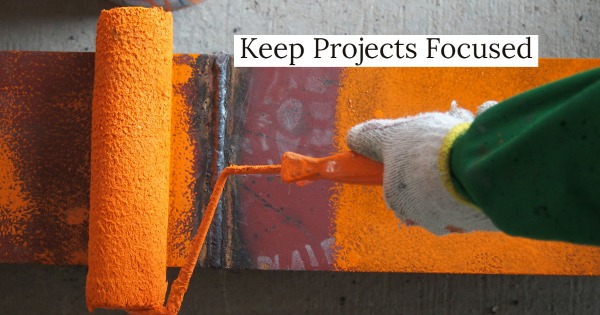
Homeowners undertake home repairs and renovations for many reasons. Replacing outdated systems, repairing longstanding problems, or installing new technology can increase both the value of the home and the homeowner’s enjoyment of it.
As you gain more confidence in your home repair and renovation skills, you might want to undertake more complicated projects. Here are some DIY home repair tips for advanced repair and renovation projects:
Have a Plan
It can sometimes be tempting to approach a home repair project with a toolbox and only a general idea of what to do. However, one of the most important DIY home repair tips is to have a plan before you begin work.
A plan is important for a few reasons, including:
- Building permits: Some home repairs require a building permit. For example, in some areas, building or replacing residential fencing requires approval from the local building commission.
- Building code: Building codes govern many aspects of construction, from the height of stair railings to the depth of concrete footings. Researching the building code provisions that apply to your repair or renovation project will help you remain in compliance with the building code and pass any necessary building inspection.
- Utility markers: If your project requires any digging, planning ahead will allow you to have your utility lines marked so you do not damage them. Depending on where you live, your water, sewer, natural gas, and cable TV lines might be underground near your excavation location.
- Special tools: Some home repair and renovation projects require special tools. For example, replacing a bathtub or shower requires a special plumbing wrench to remove the drain fitting. By planning ahead, you can be sure to have all the tools you need to complete your project.
- Materials: If you plan ahead, you can shop around to get the best price on materials and make sure you buy the right quantity of materials to finish your project.
- Techniques and procedures: Taking some time to form a plan will allow you to research how to complete your repair project. You will be able to gather DIY home repair tips from online videos, books, and even local hardware store employees.
Create a Budget
Although you will likely save money by handling your repairs yourself with your DIY home repair tips, you will still need to set a budget for both your time and money. Nothing is more dangerous than leaving a home repair project incomplete because you cannot devote the time or money to finish it.
Moreover, a budget will help you determine if you need a home loan, home equity loan, or home equity line of credit to afford your repairs. By budgeting ahead of time, you can get funding for your project before you start.
Some of the items to include in your budget are:
- Plans: Even if you plan to carry out your repairs or renovations yourself, you might still need plans from a licensed engineer or architect to obtain building permits and ensure that your project is structurally sound. Plans can be expensive, running into the thousands of dollars for large projects like a new roof or home addition.
- Permits: Filing fees for building permits can be expensive. If the local building commission rejects your application, you might need to file for a variance or appeal the rejection. This might require additional filing fees.
- Tools: If you need to buy or rent tools, you will need to budget for the cost.
- Materials: Your material costs are often the greatest expense associated with your project. A roof maintenance project, for example, might require structural lumber, shingles, and roofing nails.
Make Time
Make time to implement your DIY home repair tips and complete your project. Incomplete home repairs and renovations can pose a number of problems:
- Danger: Exposed insulation and electrical wiring can pose a danger to you and your family, particularly if you are living in your home during the repair project.
- Permit non-compliance: Building permits usually have a project completion date. If your project is not completed before the date and you fail to obtain an extension, your project might be deemed non-compliant.
- Structural changes: If your project is delayed, your home may settle and throw off your measurements. For example, if you are interrupted during your window replacement project, your window openings might change shape or size during the delay and your replacement windows might not fit.
- Moisture: Delays might allow moisture, insects, mold spores, or other undesirable pests to invade your repair project. Finishing quickly can prevent your project from hosting invaders in your home.
Setting a construction schedule can help you make sure you set aside enough time for each step of your project while still completing it on time. Moreover, a schedule will help you avoid skipping steps and having to redo your construction after missing an important step.
Consider Renting Tools
One of the underappreciated DIY home repair tips is to rent, rather than buy, tools you need for your project. Many hardware stores rent tools so you can reduce your costs and eliminate the need to store tools that you might use only rarely.
Some tools are worth buying. For example, a circular saw might be used frequently enough that buying a saw is more efficient than renting one.
On the other hand, infrequently used tools, specialized tools, or expensive tools might be better rented than bought. Thus, renting a cement mixer from an asphalt repair services business might help you complete your project more efficiently without spending the money on buying a cement mixer.
Some other advantages of renting tools include:
- Quality: Tool rental businesses usually rent high-quality tools that can be used and re-used without breaking.
- Maintenance: Tool rentals maintain their tools in top condition.
- Storage: By renting tools rather than buying tools, you do not need to find a place to store them when you are not using them.
- Repair costs: If the tool breaks, you are not responsible for repairing it. The one exception is if you misused the tool in a way that violates the rental agreement.
- Trial period: If you are considering buying tools, renting them first can give you a feel for whether buying them is worthwhile.
Ask for Help
The best DIYers know that there is no shame in asking for help. DIY home repair tips can come from anywhere, so if you run up against a problem or something unexpected happens, seek out assistance. Help can come from many different sources, including friends, relatives, online videos, or workers at the local hardware store.
Most importantly, seek out the assistance of a licensed contractor if you run into a problem while working on your repair or renovation project. Although it may require you to swallow your pride, seeking out the help of a professional when your repair project hits a snag can have many benefits including:
- Experience: A contractor might have run into the same problem you are facing and may already have a solution that can help you complete your project.
- Compliance: A building contractor knows the building code and will know if there is a way to solve your problem without violating the code.
- Equipment: Contractors buy the best tools and have specialized equipment that might help you overcome your problem.
For example, if your basement floods and you are at a loss for how to solve the problem, a contractor or engineer might know to look at sealcoating the driveway to try to keep water away from the foundation. This ability to use another’s expertise rather than cobbling together an untested solution is one of the most important DIY home repair tips.
Use Quality Materials
As you work on your repair project, make sure you understand where you can save money and where you need to spend money to ensure durability. For example, while it might seem like a minor issue, high-quality nails are essential to roof repair. Nails that are low quality or have not been galvanized or coated will rust and your roof repair will not last even if you used the most expensive shingles available.
Spending the money to purchase high-quality materials is also one of the important DIY home repair tips for producing a return on your investment. Materials are the most visible aspect of your repair project along with craftsmanship. Poor quality materials can make a repair project look shoddy even with the best craftsmanship possible. Moreover, materials will dictate the durability of your repairs. These two factors will influence the perceived quality of your work.
The average bathroom renovation has an ROI of 70%. However, a bathroom renovation that uses solid wood, rather than wood laminate, and stone countertops, rather than tile, will likely have a higher ROI simply due to the materials used. Thus, the additional money you spend on materials will often be returned when you sell the home.
Work Safely
For many DIYers, safety takes a back seat to the project itself. However, experienced home repair workers know that one of the most important DIY home repair tips is to work safely. Some measures you can take to make sure your repair work is conducted safely include:
- Protective equipment: Wear eye protection throughout your repair work. Tools and materials can chip, sending shards toward your eyes. For work that produces dust or requires chemicals, wear masks appropriate to filter the contaminants from the air you breathe.
- Fall protection: Falls are the top reason for emergency room visits. Use safety harnesses and lines to prevent serious falls. Make sure ladders are placed on solid footing to prevent accidental tipping.
- Electric safety: If you are working anywhere near the electrical system, turn off the circuit before commencing work. This precaution should be employed even if you are not working on the electric system itself. You can be electrocuted merely by cutting a wire while demolishing a wall or touching an electrified water pipe while performing plumbing service on your water system.
- Fire safety: Fires can come from many sources during a project. Sparks produced while cutting or grinding metal can ignite a fire. Loose wires or frayed extension cords can start an electrical fire. Even rags with flammable substances on them can be a fire hazard. Keep your workspace clean and your electric tools in good condition. Make sure smoke detectors are functional and store a fire extinguisher nearby while you work.
Make sure you understand what to do in the event of a workplace accident. Understand how to use first aid to stabilize anyone who falls victim to an accident and keep a first aid kit handy. No project is worth compromising your safety, so work carefully and take breaks if you are tired.
Keep Projects Focused
While it can be tempting to try to tackle all your home repairs at once, keep your focus so you can complete a project before beginning a new one. For example, you might be tempted to install replacement doors and windows while painting your home’s exterior. However, these two projects are actually separate repairs, and trying to do both at the same time could break your budget, consume more time than you can commit, and overwhelm your ability to safely complete either project. The result will be that both projects take more time and effort than necessary.
If you plan to undertake major renovations and repairs to your home, one of the DIY home improvement tips to keep in mind is to create a master plan for your repairs. That way you can group together similar tasks that can be performed together without biting off more than you can chew at any one time. For example, roof repair and rain gutter replacement might be performed more efficiently together, whereas roof repair and exterior painting might be performed more efficiently if separated.
Dispose of Construction Waste Properly
When you complete your home repairs, you will have construction waste. One of the advanced DIY home repair tips that will make you seem like an expert is to plan for your construction waste before you begin.
For example, renting a waste container will ensure that you have enough space to dispose of your waste without taking a trip to the landfill or borrowing a pickup truck to haul it away. Equally importantly, you should identify whether your waste will include hazardous materials that require special handling. For example, lead pipes, paint, and fiberglass insulation might not be allowed in your local landfill and might need to be taken to a hazardous materials facility for disposal.
On the other hand, you might also be able to recycle or resell your construction waste, preventing it from disrupting the environment. Functioning appliances, stone countertops, and usable sinks can be sold, sent to a recycling center, or donated, thereby keeping them out of the landfill. Recycling is an up and coming trend in construction, so you should keep an eye open for any waste from your project that might be repurposed or reused in someone else’s project.
DIY home repair tips can come from anywhere. Before you begin your project, cast a wide net to make sure you know how to plan, execute, and complete your repair project in the most efficient way possible. This prior planning will not only save you time and money, but will keep you motivated to continue your repair projects around the home. The final result will be a home that is more valuable and enjoyable for you and your family.




